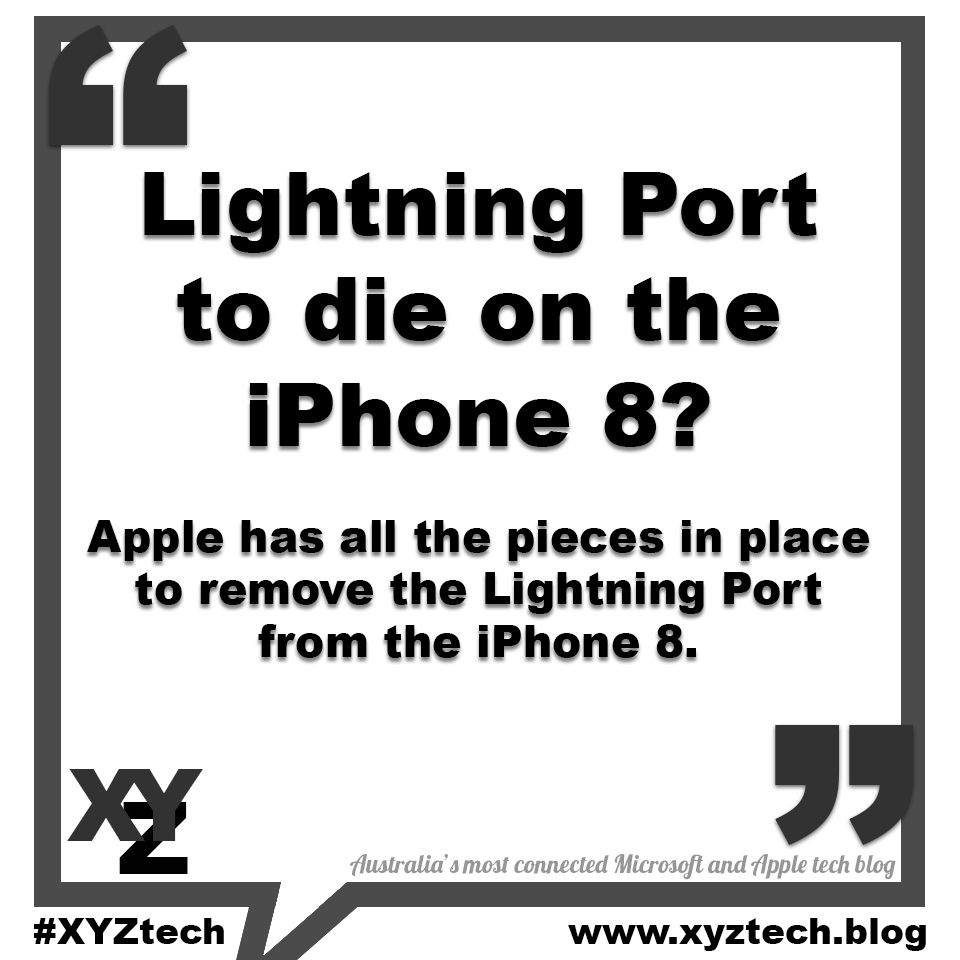Lightning Port to die on iPhone 8?
- Xavier Zymantas, XYZ Media Group
- Jan 6, 2017
- 3 min read
Apple has already removed the headphone jack from the iPhone 7 and 7 Plus. With Apple rumoured to be including wireless charging on the new iPhone 8, will the Lightning port be the next to die?
The discovery of a patent for a no-port-hole-required magnetic charging system and separate rumours of wireless charging on the iPhone 8 have led analysts to speculate whether the Lightning port will die out, giving the iPhone 8 a slimmer profile, more room for a bigger screen along the bottom of the phone, and more room for the Home Button and touch ID to be integrated under the screen of the next iPhone.
Further corroboration comes today from the Steve Rizzone, CEO of Energous, a company specialising in wireless charging, who made veiled references to Apple and the iPhone. A recent interview with the Energous CEO hinted that there is a strategic partnership already signed in 2015, without mentioning Apple by name. However, other comments from Steve Rizzone strongly hint that it is with Apple, as do other transactions made by Energous. Apple is renowned for requiring absolute confidentiality in its commercial contracts.
Not only is charging the iPhone 8 expected to be wireless, but it is also expected to be based on a transmitter. The transmitter would be plugged in to power, then wirelessly transmit the electricity to a receiver in a phone, tablet, or laptop. This means that a charging pad is not required to make contact with the phone. You could have your phone on the coffee table 15 feet from the power point, and it would begin to charge remotely, without a pad or cable attached. This would be regarded as a worthwhile technological innovation, trumping other smartphone manufacturers.

Lightning Port
What are the primary uses of the Lightning port on your iPhone? Power and data, and accessories.
If there is to be a wireless charging option included with the iPhone 8, charging the battery may no longer rely on the Lightning port alone.
As for data transfer, your iPhone, via iOS, can already sync wirelessly over your Wifi network with iTunes, without being plugged in to your computer or laptop.
The other main use of the port is to connect accessories, such as docks, speakers, headphones, and adapters, providing connectivity to everything from speakers to projectors, TVs, and car systems. The Lightning port could still be valuable in these scenarios, where you've already made investments in other equipment, that may not have any other way to connect to the iPhone 8. How would this issue be overcome if the Lightning port was removed?
Apple already has the answer. Apple patented a magnetic power and data transfer system which does not require a port hole in the side of the device.
Similar to Magsafe on previous generation Apple laptops, the magnets would align the cable to the side or rear of the phone, and be capable of transferring power and data in both directions. This would enable you to magnetically snap a connector to the rear or base of your iPhone, having a magnetic connector on one end and a Lightning port on the other. This would essentially provide you with a backup method of attaching a Lightning port to a phone that no longer has one, ensuring backwards compatibility with existing accessories.
So with power, data, and accessory attachment taken care of, Apple has quietly cleared the way for the removal of the Lightning port from the next iPhone.
Until next time,
Xavier Zymantas
XYZ Media Group





Comments